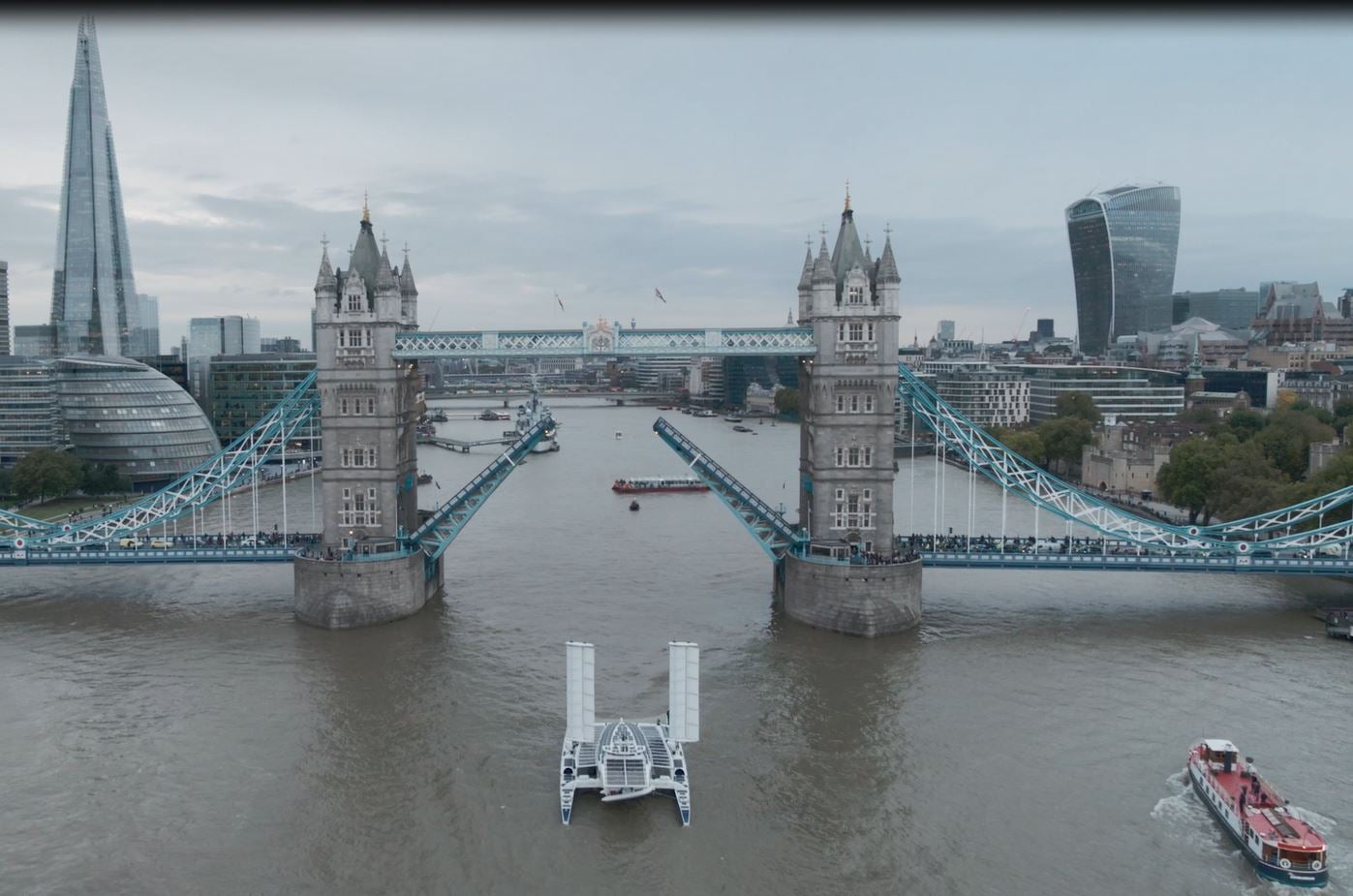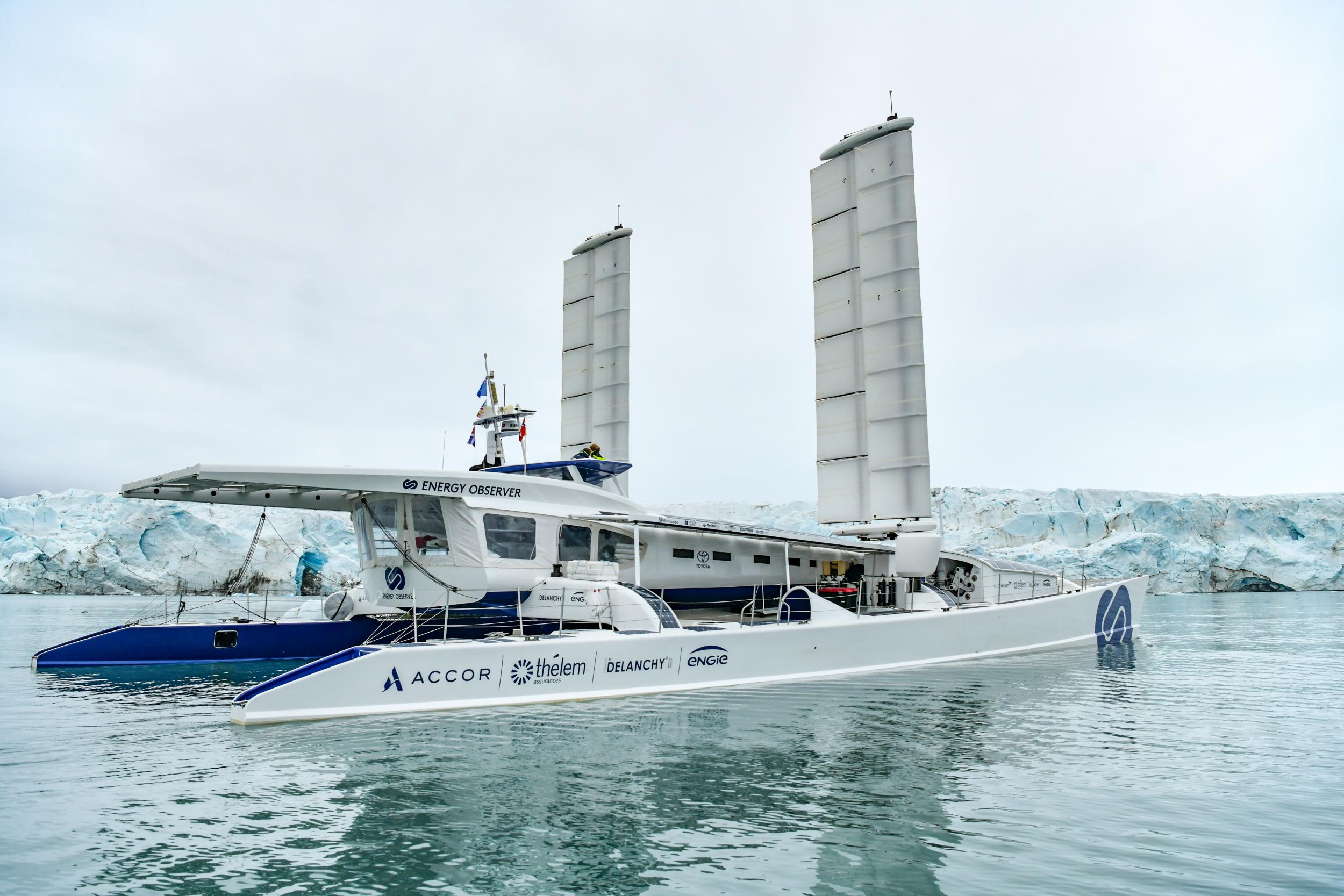The world’s first hydrogen-powered ship has arrived in London as part of a six-year, zero emissions voyage around the world.
The 30-metre long Energy Observer catamaran has already travelled 18,000 miles since leaving Saint Malo on the west coast of France and will remain stationed by Tower Bridge for 10 days as it finishes its European tour.
Crew say they want their “floating laboratory” to show that shipping can be decarbonised, emphasising that this needs to happen urgently to avoid catastrophic levels of climate change.
The Toyota-sponsored vessel is the first in the world to create its own hydrogen fuel by sucking up sea water as it sails along at speeds of up to 7.12 knots.
Water is desalinated – which means salt and minerals are removed – before it goes through an electroliser that breaks water into its elements, hydrogen and oxygen.
Oxygen is released and the hydrogen is compressed and kept in two storage facilities on either side of the ship.
“In total it can store 62kg of hydrogen which is the equivalent of two megawatts of energy. This is the annual consumption of an average household – so a lot of energy,” Energy Observer crew-member Amélie Conty told The Independent.

Renewable energies are known as fluctuant energies which means they cannot always be relied upon. Engineers decided to use hydrogen to plug the gap.
“We use renewable energies all day long to charge our batteries and propel the boat. When we don’t have enough of those renewable energies we have our own hydrogen on board that we use to propel the boat,” Ms Conty said.
The ship – which has six crew members – relies on approximately 52 per cent of its energy from the sun, 42 per cent from its wings and six per cent from hydrogen.
The vessel itself is 35 years old and already sailed around the world several times before it was renovated with the new technology at a cost of $4.7m (£3.8m).

“We got it when it was a wreck and transformed it into the Energy Observer. The whole idea was to find a way to propel a boat without emitting any CO2 or greenhouse gases or any pollution,” Ms Conty said.
The Oceanwing sails are 12 metres long and can rotate 360 degrees so they catch as much wind as possible. Engineers hope in the future the sails – which are completely automated – could be put on cargo ships to make them up to 42 per cent more energy efficient.
The aim of the expedition is to develop a commercial product which Ms Conty said should be available to vessels around the world in five to 10 years.
The boat, which is being led by founder and captain Victorien Erussard and Jérôme Delafosse, will visit 50 countries and 101 ports during its six-year journey. It was designed by the CEA-Liten research institute in Grenoble.
“We’re finishing our European tour in London for many reasons. The main reason why we stop is to talk about the boat and the environment and the sustainable development goals of the UN,” Ms Conty said.
“Today is quite a special day because of the big Extinction Rebellion protests which obviously we totally agree with and it’s sad we can’t be there with them. We really support what they’re doing and they are in our thoughts.”
Crew say they want to prove that shipping can be made significantly more environmentally friendly.
They believe their energy mix could not only transform the shipping industry but could also be used for energy grids on land too.
Ms Conty said: “It’s daunting when you realise to be honest, it’s time we get a move on, it’s almost too late. There’s no more time for debating if it’s true or not, it’s now and that’s it. I can’t stress that enough.
“In the Mediterranean we sailed on a sea that is almost dead. There are hardly any fish in it any more, half the time we tried to fish we ended up fishing plastic. When we did catch fish they were very small. Since we’ve been in the boat we’ve seen the effects of climate change everywhere.
“The consequences of climate change are really really visible. The situation is dire, and it’s easy for us to think: ‘It’s far away, it’s not going to affect us.’ But it is going to affect us and it’s actually affecting us now. We really have to find solutions. That’s what we’re trying to do.”







